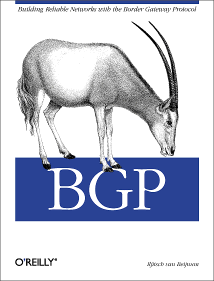
|

|

|
|
Home ·
BGP Expert Test ·
What is BGP? ·
BGP Vendors ·
Links ·
Archives ·
Books ·
My New BGP Book | ||
2007 IPv4 Address Use ReportIn 2007, the number of available IPv4 addresses went down from 1300.65 million to 1122.85 million, a difference of 177.8 million addresses. The number of usable addresses is 3706.65 million, so on January 1, 2007 we were at 64.9% utilization and a year later we're at 69.7%. These figures are derived from the records published on the FTP servers of the five Regional Internet Registries (RIRs): AfriNIC, which gives out address space in Africa, APNIC (Asia-Pacific region), ARIN (North America), LACNIC (Latin American and the Caribbean) and the RIPE NCC (Europe, the former Soviet Union and the Middle East). There are two other ways to interpret the same data. The first is simply add up all the address space with a date indicating that it was given out in 2007. That number is 186.93 million addresses. The third method is to compensate for ARIN's record keeping peculiarities (see this Internet Protocol Journal article). This brings the total for 2007 to no less than 196.77 million, the highest number ever. The second-highest was 1991 with 189 million addresses. The 196.77 million figure is approxmately 19% higher than the 2005 and 2006 numbers, which were largely the same. All numbers only include addresses that are still in use. For the first time in many years, in 2007 one of the old class A blocks was returned to IANA: block 46.0.0.0/8, 16.78 million addresses in size, is now part of the global pool of free address space. This accounts for most of the difference between the 177.8 and 196.77 numbers. The status of the 221 usable blocks of 16.78 million address is now as follows:
Delegated to Blocks +/- 2007 Addresses (millions) AfriNIC 2 +1 33.55 APNIC 26 +7 436.21 ARIN 27 452.98 LACNIC 6 +2 100.66 RIPE NCC 26 +4 436.21 Various 49 -1 822.08 End-user 42 -1 704.64 Available 43 -12 721.42 In addition to the 43 unused blocks (721.42 million addresses) that IANA holds, there is additional free space in the form of addresses delegated from IANA to the regional internet registries, but not yet further delegated by the RIR in question to an ISP or end-user.
2007-01-01 2008-01-01
delegated delegated free delegated delegated free
TO BY TO BY
AfriNIC 16.78 6.39 10.39 33.55 11.97 21.58
APNIC 318.77 297.23 21.54 436.21 366.87 69.34
ARIN 452.98 350.48 102.50 452.98 394.08 58.90
LACNIC 67.11 42.71 24.40 100.66 57.52 43.14
RIPE NCC 369.10 317.62 51.48 436.21 378.35 57.86
Total RIRs 1224.74 1014.43 210.31 1459.61 1208.79 250.82
Various 838.86 671.26 167.60 822.08 671.48 150.60
End-user 721.42 704.64 16.78 704.64 671.09 33.55
Available 922.74 16.78 905.96 721.42 16.78 704.64
Total 3707.76 2407.11 1300.65 3707.75 2568.14 1139.61
This view uncovers two inconsistencies: block 7.0.0.0/8 that is part of the free space according to the IANA IPv4 address space overview shows up as delegated to the US Department of Defense in ARIN's records. Net 14.0.0.0/8 is for the "public data net" (see RFCs 3330 and 1700) so it's not part of the regular delegation system. 43.0.0.0/8 is delegated to "Japan Inet" by IANA. Those delegations used to be registered in ARIN's database but this block was transferred to APNIC in 2007, where it does show up in the whois service, but not as part of the delegated address space in the files on the FTP server. The total of 3707.76 (or 3707.75) million addresses is slightly different from the 3706.65 maximum mentioned earlier because the latter excludes all RFC 1918 private address space, the former still includes 192.168.0.0/16 and 172.16.0.0/12. (See last year's report for additional information.) The size of address blocks given out was increasing until 2005, but now shows a downturn. The table below shows the number of delegations for a certain range of block sizes (equal or higher than the first, lower than the second value). (2005 and earlier values from 2006-01-01 data, 2006 and 2007 values from 2007-01-01 data. No correction for the ARIN accounting method.)
2001 2002 2003 2004 2005 2006 2007
< 1000 474 547 745 1022 1309 1507 1830
1000 - 8000 1176 897 1009 1516 1891 2265 2839
8000 - 64k 868 822 1014 1100 1039 1192 1015
64k - 500k 262 163 215 404 309 419 395
500k - 2M 39 29 46 61 60 57 62
> 2M 5 5 6 7 18 17 24
The increase in large blocks has a very dramatic effect while the small blocks are insignificant, when looking at the millions of addresses involved:
2001 2002 2003 2004 2005 2006 2007
< 1000 0.16 0.18 0.25 0.35 0.44 0.51 0.63
1000 - 8000 4.47 3.23 3.45 4.49 5.07 5.83 6.93
8000 - 64k 12.81 11.35 14.00 15.99 15.46 18.01 15.67
64k - 500k 32.19 20.28 25.51 42.01 34.23 50.86 50.83
500k - 2M 24.64 21.30 31.98 44.63 41.63 46.69 45.50
> 2M 14.68 12.58 12.58 20.97 68.62 52.43 67.37
Despite the strong increase in the number of 2 million+ blocks and the amount of address space given out in these blocks, the average block size has been going down because of the very large growth in the numbers of smaller blocks:
Year Blocks Addresses (M) Average block size 2000 2794 78.35 28043 2001 2824 88.95 31497 2002 2463 68.93 27985 2003 3035 87.77 28921 2004 4110 128.45 31252 2005 4626 165.45 35765 2006 5457 174.32 31945 2007 6165 186.92 30320 The 2568.14 million addresses currently in use aren't very evenly distributed over the countries in the world. The current top 15 is:
2008-01-01 2007-01-01 change Country
1 - US 1408.15 M 1366.53 M +3% United States
2 - JP 141.47 M 151.27 M -6% Japan
3 (4) CN 135.31 M 98.02 M +38% China
4 (3) EU 120.35 M 115.83 M +4% Multi-country in Europe
5 - GB 83.50 M 93.91 M -11% United Kingdom
6 - CA 73.20 M 71.32 M +3% Canada
7 - DE 72.46 M 61.59 M +18% Germany
8 - FR 67.79 M 58.23 M +16% France
9 - KR 58.86 M 51.13 M +15% Korea
10 - AU 33.43 M 30.64 M +9% Australia
11 (12) IT 24.04 M 19.14 M +26% Italy
12 (11) BR 23.46 M 19.27 M +22% Brazil
13 (16) MX 21.50 M 16.26 M +32% Mexico
14 (13) ES 20.42 M 18.69 M +9% Spain
15 - NL 19.89 M 18.08 M +10% Netherlands
The -6% and -11% figures for the UK and Japan are once again anomalies: the former is the missing 43.0.0.0/8 net and in the latter case, ARIN and RIPE both had a record for 25.0.0.0/8 in the 2007-01-01 data, but this was cleared up in the 2008-01-01 data. Although the US still added more than 40 million new addresses to its immense existing stockpile, its growth was modest percentage-wise and it now holds 55% of the IPv4 address space in use, down from 57%. All of the other countries in the top 15 except for Canada and "EU" saw their address use grow faster than the 7% average. This brings the total for the top 15 excluding the US to 35%, up from 34%. The rest of the world gets the remaining 10%, up from 9%. Please note that the original version of this page and the emails that I sent out had incorrect date labels in two places. The corrections show in red.
|
